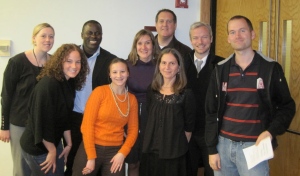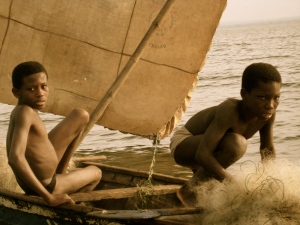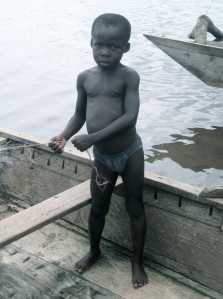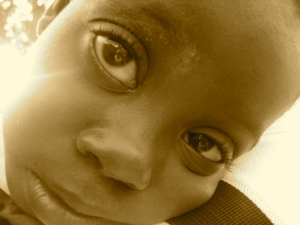On Monday, October 26, the Boston University School of Public Health held an event entitled Abolishing Modern Day Slavery. Emmanuel Otoo, West Africa Regional Coordinator for Free the Slaves, was the keynote speaker. Panelists included: Benjamin Skinner – Author of a Crime So Monstrous, Fellow at Carr Center for Human Rights Policy of Harvard Kennedy School; Dr. Timothy McCarthy – Director for Human Rights and Social Movements, Harvard Kennedy School; and Susan Goldfarb – Executive Director for Support to End Exploitation Now (SEEN).
Mr. Otoo gave a riveting presentation on modern day slavery in West Africa. “Almost a quarter of the children in Ghana are engaged in hazardous labor. Many of them have been trafficked from various regions in West Africa and work as many as 14 hours in a day,” he said. Mr. Otoo emphasized that slavery is predominantly rooted in poverty and that many of these children are attempting to pay off family debts that increase daily. Most of his efforts with Free the Slaves focus on slavery prevention through community development, education, and empowerment.
Mr. Skinner has traveled extensively on five continents researching modern day slavery as a journalist and is one of the few people that has infiltrated the ring of traffickers themselves. Mr. Skinner has often posed as an interested customer to draw into the light what is hidden in the darkness of brothels. After uncovering the staggering details of how these humans are exploited, Mr. Skinner took his facts to the local authorities and said, “Here is the information. You can either deal with this the right way or I will make you famous.”
Dr. McCarthy, award-winning teacher and advisor at Harvard Kennedy School, spoke of his personal journey of discovering modern-day slavery. After years of researching the history of slavery, he was shocked when he read Kevin Bales’ Disposable People and realized how little he knew about the slavery that existed today. He stated, “We are so hesitant to call what is happening today slavery because America has PTSD [post-traumatic stress disorder] from our past with this issue. Using the word ‘slavery’ acknowledges that we haven’t done enough work. By using that word, we admit that we are complicit, that we are the demand.”
Ms. Goldfarb struck a chord in the audience when she wrapped up the evening by relaying countless stories of slavery and exploitation among women and children in Boston and its surrounding areas. “Slavery is not something that just happens in Southeast Asia or Africa. It’s happening in our own backyards,” she said. Ms. Goldfarb emphasized the fighting slavery must be a collaborative effort between all relevant interest groups. “There may not always be a lot of love between government agencies and non-governmental agencies who are working on this issue, but we must lay all of our differences aside and come together over the common goal of eliminating slavery.”
All of the panelists agreed that the first step in abolishing slavery is letting people know that it still exists today. Mr. Skinner ended the evening with a challenge that had recently been posed to him by a colleague. “If all of you tell 10 people that human slavery still exists, then those 10 people will tell 10 people, and those people will tell 10 people…” If we ignore slavery or pretend that it does not exist, we are just as guilty as the perpetrators. We must tell the stories. We must acknowledge that we are the demand.
This event was a collaborative effort between Free the Slaves and BU’s Rotoract and Health and Human Rights Caucus, with the help of Emily George.

 Many of you have asked, “How do you actually rescue a trafficked child from slavery?” In this post, I will do my best to explain the process. (Thank you, Liz, for your amazing editing.)
Many of you have asked, “How do you actually rescue a trafficked child from slavery?” In this post, I will do my best to explain the process. (Thank you, Liz, for your amazing editing.)
 Recently, Touch a Life partnered with PACODEP, City of Refuge and Not For Sale to rescue Teiko, a 6 year old trafficked girl, from an island community on Lake Volta. Lake Volta is home to thousands of child slaves who work 12-16 hour days on fishing boats. The majority of these children are trafficked from various regions both inside and outside of Ghana and receive no health care and no education.
Recently, Touch a Life partnered with PACODEP, City of Refuge and Not For Sale to rescue Teiko, a 6 year old trafficked girl, from an island community on Lake Volta. Lake Volta is home to thousands of child slaves who work 12-16 hour days on fishing boats. The majority of these children are trafficked from various regions both inside and outside of Ghana and receive no health care and no education.